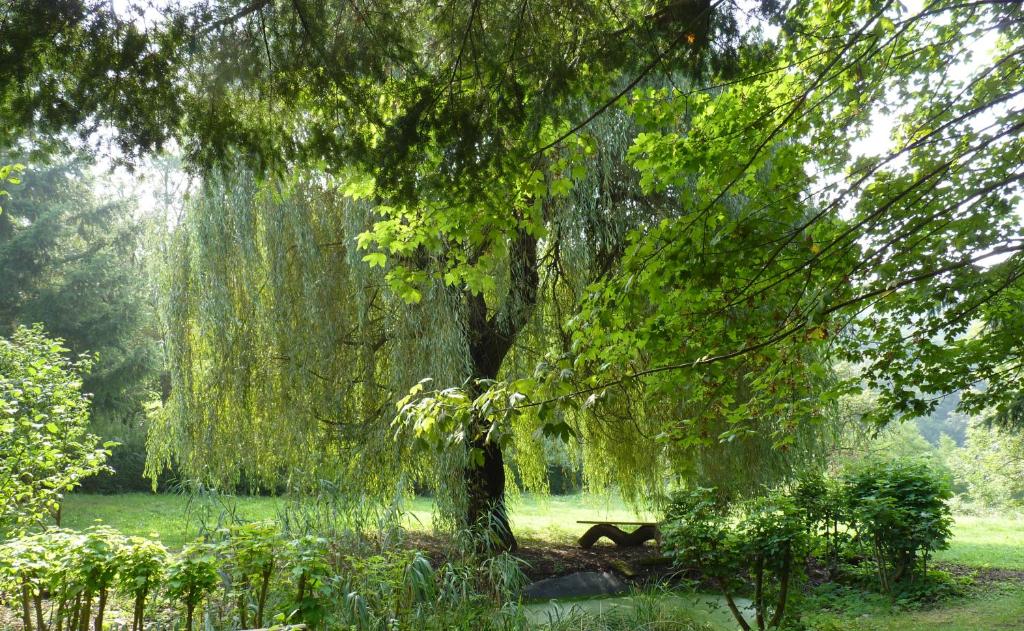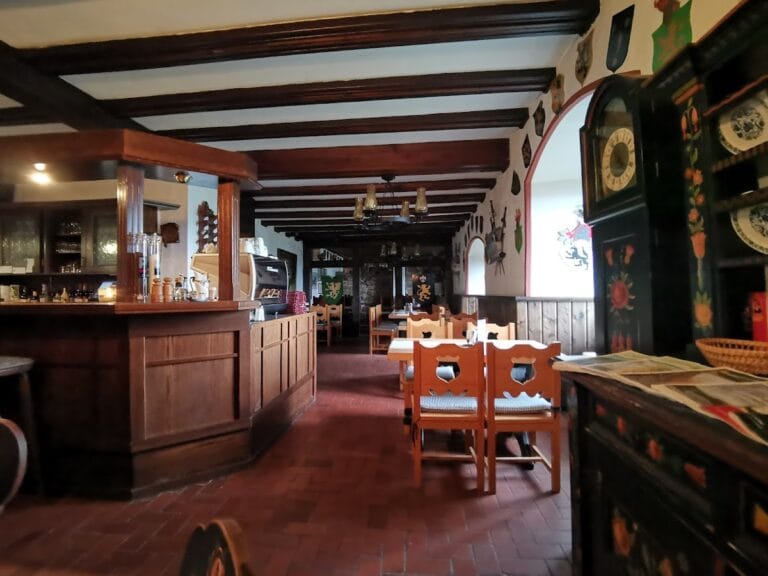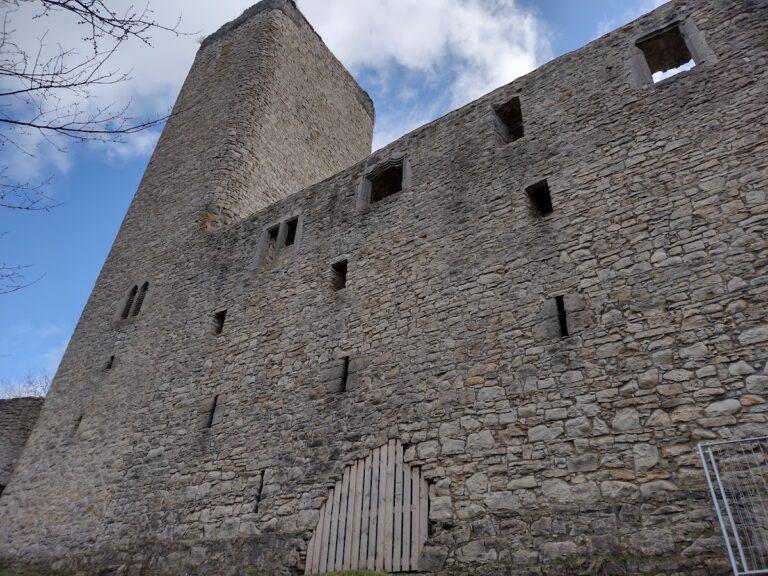Burg Weißenburg: A Historic Hilltop Castle in Uhlstädt-Kirchhasel, Germany
Visitor Information
Google Rating: 4.5
Popularity: Low
Google Maps: View on Google Maps
Official Website: www.schlossweissenburg.com
Country: Germany
Civilization: Medieval European
Remains: Military
History
Burg Weißenburg is a hilltop castle situated in the municipality of Uhlstädt-Kirchhasel, Germany. It was established in the 13th century by a medieval German noble family and served as a dynastic seat during that era.
The castle’s origins trace back to around 1248, linked to the partition of the Weimar-Orlamünde comital house. Initially known as “Wizzenburgk,” it functioned as a fortified residence for the local nobility. In 1344, ownership transferred to Margrave Frederick II of Meissen, though Count Heinrich IV of Orlamünde maintained lifelong living rights under a formal agreement. Its strategic position on a rock cliff near the Saale River made it a significant defensive stronghold, fortified by natural slopes and man-made walls with towers.
Throughout the 15th century, Burg Weißenburg saw multiple changes in possession. It was administered by ducal officials called vogts before passing to the Entzenberg lords and later, from around 1443, to the von Kochberg family as feudal tenants. In the late 15th and early 16th centuries, the Kochberg brothers sold their shares to Friedrich von Thun, who was closely connected to Saxon electors and dukes. Friedrich von Thun accompanied Martin Luther to the pivotal Diet of Worms in 1521 and was involved in Luther’s safeguard at Wartburg Castle.
During the 1525 Peasants’ War, the castle provided refuge to Georgius von Thüna, the last abbot of the Benedictine monastery of Saalfeld. He reportedly died there while seated on his treasures in the deepest cellar, reflecting the castle’s role as a sanctuary during times of upheaval.
In 1529, Friedrich von Thüna modernized the medieval fortress into a more comfortable noble residence, a transformation marked by his coat of arms placed above the main gate. The estate remained under the Thüna family for more than a century and a half, later held jointly with the von Lengefeld family, who were vassals serving the Schwarzburg counts in nearby regions such as Rudolstadt, Saalfeld, and Leutenberg.
From 1707 until 1761, the von Lengefeld family held sole ownership but eventually sold the property due to financial difficulties, ending a long era of local noble stewardship. Among those who remembered the castle from their youth was Charlotte von Lengefeld, who later married the famed poet Friedrich Schiller.
In July 1777, Johann Wolfgang von Goethe visited Burg Weißenburg several times. During this visit, he cared for the von Lengefeld family’s children and created drawings of the estate, indicating the castle’s continued importance as a noble residence in the late 18th century. However, a major fire in 1792 destroyed large sections of both the original fortress and the Thüna family’s residential quarters.
Reconstruction efforts began in 1796, reshaping the castle into a form closer to its modern appearance. The rebuild included a two-story residential building on the southwestern high ground and a larger main structure positioned along the cliff’s edge. This phase maintained some elements of the earlier Thüna castle, preserving parts of the vaulted gatehouse and sections of the northern tower.
In the late 19th and early 20th centuries, the castle passed through various owners including local officials and nobles. Around 1881, the merchant Krüger acquired part of the estate and expanded the villa located on the northeastern side by adding a new floor. The southwestern wing served administrative functions as the seat of the forestry office connected to the Meiningian domain.
Baron Eduard von Derenthall, a Prussian diplomat, purchased the castle in 1893. After his widow’s time, the castle underwent social changes starting in 1927 when it was leased to welfare organizations. The site housed a children’s home until 1932 and later became a training facility for unemployed girls in 1936.
During World War II, from 1941 to 1945, the castle was home to Johann von Leers, a Nazi propagandist known for his antisemitic views. Following the war, both the castle and the neighboring Weißeneck estate became public property, used to shelter displaced persons and refugees. By 1946, it was transformed into a sanatorium specializing in lung diseases by the local district administration.
After German reunification, Burg Weißenburg returned to private hands and was adapted into a rehabilitation clinic focusing on cancer and rheumatic illnesses. A specialized therapy center was added, accompanied by restoration work on the historic structure. Adjacent buildings, such as the former servants’ house, now host the state division of the German Rheumatism League in Thuringia.
Remains
Burg Weißenburg originally comprised a fortress-like complex crowning a rock plateau above the Saale valley. The stronghold featured five towers concentrated on the higher part of the site, exploiting the natural steep slope along the northern edge as a defensive barrier. On the remaining sides, man-made fortifications included a rampart, a protective ditch, and a sturdy wall with a main gate, reinforcing the castle’s military function during the Middle Ages.
Beneath the southwestern section of the castle lies a sophisticated network of sandstone cellars carved directly into the rock, known locally as the “Schleiflöcher.” These underground chambers are thought to date back to the time of the original Orlamünde noble family and may have been used for storage or shelter.
Remnants of several towers remained visible well into the late 19th century, and today, portions of the defensive ditch and the castle’s outer wall still survive, allowing visitors to discern the original layout. During the 1796 reconstruction following the devastating fire, major alterations created the present two-story residential building on the southwestern plateau and a larger main building positioned near the cliff face, blending the old fortress with newer living quarters.
Among the features preserved from the Thüna period are the vaulted ground floor of the former gatehouse, reflecting medieval construction techniques, and likely the lower part of the octagonal northern tower. These structural elements offer a glimpse into the castle’s early defensive architecture.
In the late 19th century, the property expanded with the northeastern section transformed into a villa by merchant Krüger, who added an upper story. This villa and surrounding buildings took on more residential and administrative roles, contrasting with the fortress’s prior military use.
The southwestern wing of the castle was notably used as the administrative center for the Meiningian forestry service, later renamed the Oberförsterei Weißenburg and eventually the Thüringisches Forstamt Weißenburg, demonstrating the site’s evolving role in local governance.
Adjacent to the main castle is the former servants’ house, now repurposed for civil use as the headquarters of the Thuringian branch of the German Rheumatism League. The castle’s dramatic position on the rock cliff continues to provide sweeping views over the Saale valley, a feature that would have offered strategic advantage as well as scenic outlook for its historical occupants.
Together, these surviving features document Burg Weißenburg’s long history as a fortified noble residence, through periods of military significance, noble habitation, administrative use, and modern medical care.










